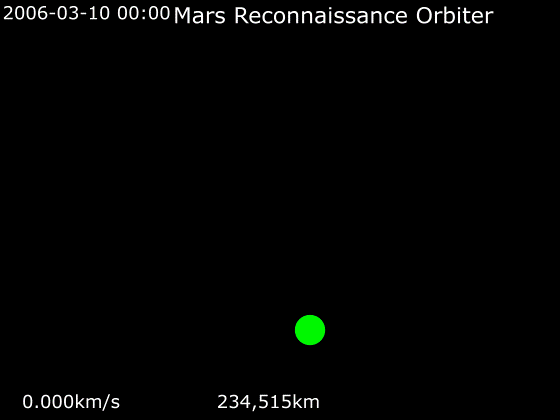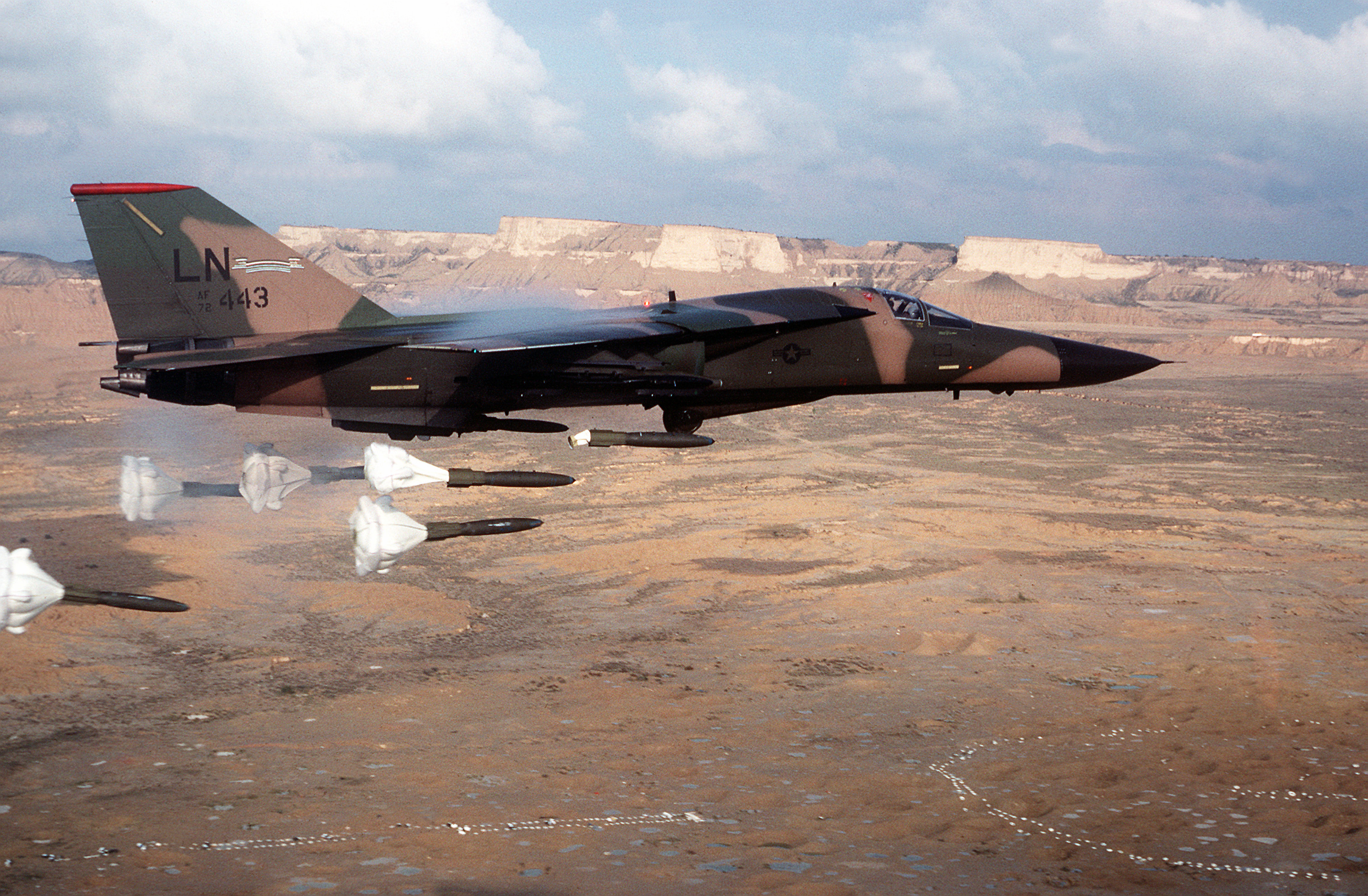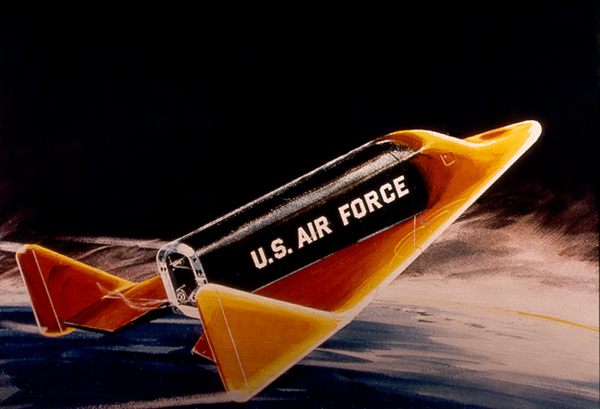|
Aerocapture
Aerocapture is an orbital transfer maneuver in which a spacecraft uses aerodynamic drag force from a single pass through a planetary atmosphere to decelerate and achieve orbit insertion. Aerocapture uses a planet's or moon's atmosphere to accomplish a quick, near-propellantless orbit insertion maneuver to place a spacecraft in its science orbit. The aerocapture maneuver starts as the spacecraft enters the atmosphere of the target body from an interplanetary approach trajectory. The aerodynamic drag generated as the vehicle descends into the atmosphere slows the spacecraft. After the spacecraft slows enough to be captured by the planet, it exits the atmosphere and executes a small propulsive burn at the first apoapsis to raise the periapsis outside the atmosphere. Additional small burns may be required to correct apoapsis and inclination targeting errors before the initial science orbit is established. Compared to conventional propulsive orbit insertion, this nearly fuel-free met ... [...More Info...] [...Related Items...] OR: [Wikipedia] [Google] [Baidu] |
Aerobraking
Aerobraking is a spaceflight maneuver that reduces the high point of an elliptical orbit (apoapsis) by flying the vehicle through the atmosphere at the low point of the orbit (periapsis). The resulting drag slows the spacecraft. Aerobraking is used when a spacecraft requires a low orbit after arriving at a body with an atmosphere, as it requires less fuel than using propulsion to slow down. Method When an interplanetary vehicle arrives at its destination, it must reduce its velocity to achieve orbit or to land. To reach a low, near-circular orbit around a body with substantial gravity (as is required for many scientific studies), the required velocity changes can be on the order of kilometers per second. Using propulsion, the rocket equation dictates that a large fraction of the spacecraft mass must consist of fuel. This reduces the science payload and/or requires a large and expensive rocket. Provided the target body has an atmosphere, aerobraking can be used to reduce fuel req ... [...More Info...] [...Related Items...] OR: [Wikipedia] [Google] [Baidu] |
Thermal Protection System
Atmospheric entry is the movement of an object from outer space into and through the gases of an atmosphere of a planet, dwarf planet, or natural satellite. There are two main types of atmospheric entry: ''uncontrolled entry'', such as the entry of astronomical objects, space debris, or bolides; and ''controlled entry'' (or ''reentry'') of a spacecraft capable of being navigated or following a predetermined course. Technologies and procedures allowing the controlled atmospheric ''entry, descent, and landing'' of spacecraft are collectively termed as ''EDL''. Objects entering an atmosphere experience atmospheric drag, which puts mechanical stress on the object, and aerodynamic heating—caused mostly by compression of the air in front of the object, but also by drag. These forces can cause loss of mass (ablation) or even complete disintegration of smaller objects, and objects with lower compressive strength can explode. Crewed space vehicles must be slowed to subsonic speeds b ... [...More Info...] [...Related Items...] OR: [Wikipedia] [Google] [Baidu] |
Aeroshell
An aeroshell is a rigid heat-shielded shell that helps decelerate and protects a spacecraft vehicle from pressure, heat, and possible debris created by drag during atmospheric entry (see blunt body theory). Its main components consist of a heat shield (the forebody) and a back shell. The heat shield absorbs heat caused by air compression in front of the spacecraft during its atmospheric entry. The back shell carries the load being delivered, along with important components such as a parachute, rocket engines, and monitoring electronics like an inertial measurement unit that monitors the orientation of the shell during parachute-slowed descent. Its purpose is used during the EDL, or Entry, Descent, and Landing, process of a spacecraft's flight. First, the aeroshell decelerates the spacecraft as it penetrates the planet's atmosphere and must necessarily dissipate the kinetic energy of the very high orbital speed. The heat shield absorbs some of this energy while much is also d ... [...More Info...] [...Related Items...] OR: [Wikipedia] [Google] [Baidu] |
Ballute
The ballute (a portmanteau of ''balloon'' and ''parachute'') is a parachute-like braking device optimized for use at high altitudes and supersonic velocities. The original ballute configuration was invented in 1948 by the Goodyear company. The innovation soon caught the attention of other organisations, including NASA; the agency incorporated ballutes into the escape system of the Gemini spacecraft. It has subsequently seen extensive use within the aerospace sector as a means of retarding the descent of various payloads, such as sections of rockets and atmospheric probes. Various proposals involving ballutes, such as for deorbiting/recovering low-mass satellites and interplanetary research programmes, have been issued in recent decades. Design The ballute is an inflatable device used to generate drag. In terms of its basic configuration, it is a cone-shaped balloon, featuring a toroidal burble fence (an inflated structure intended to ensure flow separation) that is fitted aroun ... [...More Info...] [...Related Items...] OR: [Wikipedia] [Google] [Baidu] |
Schematic Showing The Various Phases Of Aerocapture Maneuver
A schematic, or schematic diagram, is a designed representation of the elements of a system using abstract, graphic symbols rather than realistic pictures. A schematic usually omits all details that are not relevant to the key information the schematic is intended to convey, and may include oversimplified elements in order to make this essential meaning easier to grasp, as well as additional organization of the information. For example, a subway map intended for passengers may represent a subway station with a dot. The dot is not intended to resemble the actual station at all but aims to give the viewer information without unnecessary visual clutter. A schematic diagram of a chemical process uses symbols in place of detailed representations of the vessels, piping, valves, pumps, and other equipment that compose the system, thus emphasizing the functions of the individual elements and the interconnections among them and suppresses their physical details. In an electronic circuit d ... [...More Info...] [...Related Items...] OR: [Wikipedia] [Google] [Baidu] |
Odyssey Two
The ''Odyssey'' (; grc, Ὀδύσσεια, Odýsseia, ) is one of two major ancient Greek epic poems attributed to Homer. It is one of the oldest extant works of literature still widely read by modern audiences. As with the ''Iliad'', the poem is divided into 24 books. It follows the Greek hero Odysseus, king of Ithaca, and his journey home after the Trojan War. After the war, which lasted ten years, his journey lasted for ten additional years, during which time he encountered many perils and all his crew mates were killed. In his absence, Odysseus was assumed dead, and his wife Penelope and son Telemachus had to contend with a group of unruly suitors who were competing for Penelope's hand in marriage. The ''Odyssey'' was originally composed in Homeric Greek in around the 8th or 7th century BCE and, by the mid-6th century BCE, had become part of the Greek literary canon. In antiquity, Homer's authorship of the poem was not questioned, but contemporary scholarship predo ... [...More Info...] [...Related Items...] OR: [Wikipedia] [Google] [Baidu] |
Arthur C
Arthur is a common male given name of Brythonic origin. Its popularity derives from it being the name of the legendary hero King Arthur. The etymology is disputed. It may derive from the Celtic ''Artos'' meaning “Bear”. Another theory, more widely believed, is that the name is derived from the Roman clan '' Artorius'' who lived in Roman Britain for centuries. A common spelling variant used in many Slavic, Romance, and Germanic languages is Artur. In Spanish and Italian it is Arturo. Etymology The earliest datable attestation of the name Arthur is in the early 9th century Welsh-Latin text ''Historia Brittonum'', where it refers to a circa 5th to 6th-century Briton general who fought against the invading Saxons, and who later gave rise to the famous King Arthur of medieval legend and literature. A possible earlier mention of the same man is to be found in the epic Welsh poem ''Y Gododdin'' by Aneirin, which some scholars assign to the late 6th century, though this is still a ... [...More Info...] [...Related Items...] OR: [Wikipedia] [Google] [Baidu] |
Mars Odyssey
''2001 Mars Odyssey'' is a robotic spacecraft orbiting the planet Mars. The project was developed by NASA, and contracted out to Lockheed Martin, with an expected cost for the entire mission of US$297 million. Its mission is to use spectrometers and a thermal imager to detect evidence of past or present water and ice, as well as study the planet's geology and radiation environment. It is hoped that the data ''Odyssey'' obtains will help answer the question of whether life existed on Mars and create a risk-assessment of the radiation that future astronauts on Mars might experience. It also acts as a relay for communications between the ''Curiosity'' rover, and previously the Mars Exploration Rovers and ''Phoenix'' lander, to Earth. The mission was named as a tribute to Arthur C. Clarke, evoking the name of his and Stanley Kubrick's 1968 film '' 2001: A Space Odyssey''. ''Odyssey'' was launched April 7, 2001, on a Delta II rocket from Cape Canaveral Air Force Station, and ... [...More Info...] [...Related Items...] OR: [Wikipedia] [Google] [Baidu] |
Zond 7
Zond 7, a formal member of the Soviet Zond program and unmanned version of Soyuz 7K-L1 manned Moon-flyby spacecraft, the first truly successful test of L1, was launched towards the Moon on a Proton-K D rocket on August 7, 1969, on a mission of further studies of the Moon and circumlunar space, to obtain color photography of Earth and the Moon from varying distances, and to flight test the spacecraft systems. Earth photos were obtained on August 9, 1969. On August 11, 1969, the spacecraft flew past the Moon at a distance of 1984.6 km and conducted two picture taking sessions. On its way back from the moon the spacecraft tested its radio systems by transmitting recorded voices. Zond 7 reentered Earth's atmosphere on August 14, 1969, and achieved a soft landing in a preset region south of Kustanai, Kazakhstan. On its trip the craft carried 4 turtles. A human-like tissue-equivalent phantom for radiation measurements has been placed aboard. The phantom was equipped with 20 ch ... [...More Info...] [...Related Items...] OR: [Wikipedia] [Google] [Baidu] |
Zond 6
Zond 6 was a formal member of the Soviet Zond program, and an unmanned version of the Soyuz 7K-L1 manned Moon-flyby spacecraft. It was launched on a lunar flyby mission from a parent satellite (68-101B) in Earth parking orbit. The spacecraft carried scientific probes including cosmic ray and micrometeoroid detectors, as well as photographic equipment and a biological payload of flies, bacteria and turtles. The mission was a precursor to a manned circumlunar flight which the Soviets hoped could occur in December 1968, thus beating the American Apollo 8. However, after rounding the Moon, Zond 6 crashed on its return to Earth, due to a parachute failure. Mission Zond 6 was the official designation for Soyuz 7K-L1 s/n 12. It was supposed to photograph the Moon in colour and in black and white, from 8,000 km and 2,600 km ranges, then return to Earth, landing at Tyuratam, only 16 km from the launch pad. It had been a long and difficult road to develop the L1 guidance ... [...More Info...] [...Related Items...] OR: [Wikipedia] [Google] [Baidu] |
Skip Reentry
Non-ballistic atmospheric entry is a class of atmospheric entry trajectories that follow a non-ballistic trajectory by employing aerodynamic lift in the high upper atmosphere. It includes trajectories such as skip and glide. Skip is a flight trajectory where the spacecraft goes in and out the atmosphere. Glide is a flight trajectory where the spacecraft stays in the atmosphere for a sustained flight period of time. In most examples, a skip reentry roughly doubles the range of suborbital spaceplanes and reentry vehicles over the purely ballistic trajectory. In others, a series of ''skips'' allows the range to be further extended. Non-ballistic atmospheric entry was first seriously studied as a way to extend the range of ballistic missiles, but was not used operationally in this form as conventional missiles with extended range were introduced. The underlying aerodynamic concepts have been used to produce maneuverable reentry vehicles (MARV), to increase the accuracy of some mis ... [...More Info...] [...Related Items...] OR: [Wikipedia] [Google] [Baidu] |
Thin-film
A thin film is a layer of material ranging from fractions of a nanometer (monolayer) to several micrometers in thickness. The controlled synthesis of materials as thin films (a process referred to as deposition) is a fundamental step in many applications. A familiar example is the household mirror, which typically has a thin metal coating on the back of a sheet of glass to form a reflective interface. The process of silvering was once commonly used to produce mirrors, while more recently the metal layer is deposited using techniques such as sputtering. Advances in thin film deposition techniques during the 20th century have enabled a wide range of technological breakthroughs in areas such as magnetic recording media, electronic semiconductor devices, integrated passive devices, LEDs, optical coatings (such as antireflective coatings), hard coatings on cutting tools, and for both energy generation (e.g. thin-film solar cells) and storage ( thin-film batteries). It is also being ... [...More Info...] [...Related Items...] OR: [Wikipedia] [Google] [Baidu] |









_250_nm_by_250_nm_image_of_one-atom-thick_silver_islands_grown_on_palladium_(111)_surface.png)